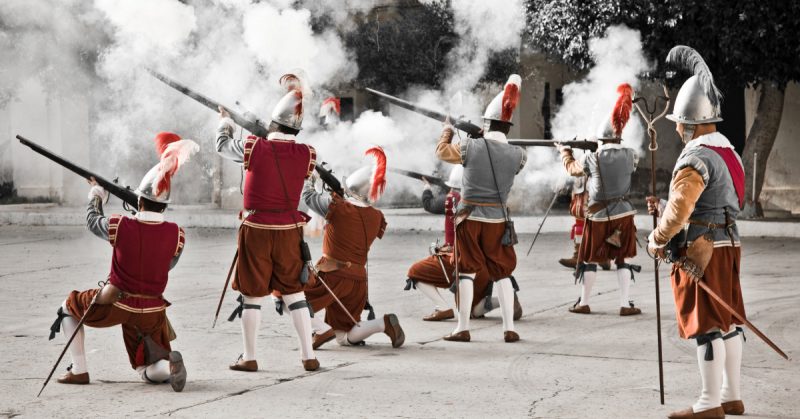The assault on the fort failed as defenders used chain shot to destroy the Ottoman siege tower and other siege weapons.
Voltaire once said “Nothing is better known than the siege of Malta.” Indeed, the result of the Ottoman attack on Malta in 1565 is one of the great turning points in European history.
The Ottomans were at the height of their power when they decided to attack Malta. Malta on the other hand was a sparsely populated island in the middle of the Mediterranean. Ottoman expansion had been extremely successful, and it seemed that they were preparing an invasion of mainland Europe.
It was up to the Knights Hospitaller to hold the line, and prevent the Ottomans from controlling most of the Mediterranean.
Suleiman the Magnificent and his Unstoppable Empire
The Ottoman Empire was seemingly unstoppable by 1565. They defeated the Mamluks and took over Egypt in 1517, thus gaining control over the entire Eastern Mediterranean. A year later they took over Algeria, which gave them a convenient launch point for an attack on either Italy of Spain.
However, the Ottomans knew that they could not match European navies. In response, they began to build up their navy for both offensive and defensive purposes.
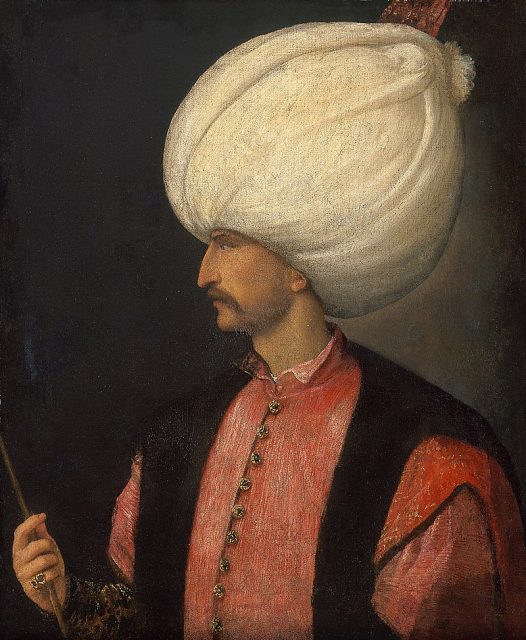
Although the Crusader States had been retaken by Muslims, the Knights Hospitaller, a crusading order, continued to exist. They had been given the central Mediterranean island of Malta as a headquarters, under the Kingdom of Sicily.
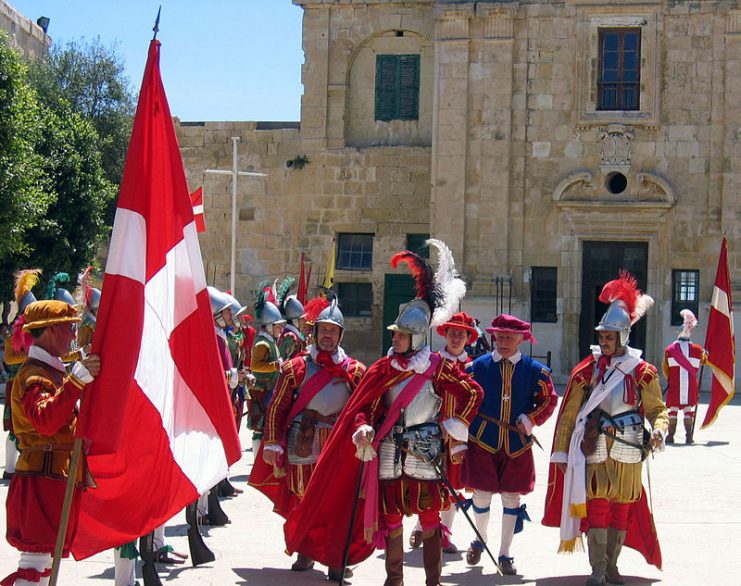
Unfortunately for the Knights, this also put them between Italy and Ottoman Algeria. If the Ottomans took Malta, they would have an excellent jumping off point to attack Italy—Sicily is only 50 nautical miles from Malta. The Ottomans had already attacked Malta once in 1551, although they aborted the siege when they discovered how difficult it was.
However, the Ottomans proved their strength in the Battle of Djerba in 1560. During the naval battle the Ottomans inflicted 10-20 times as many casualties as they sustained from the Christian alliance’s navy. The path was open for another attack on Malta.
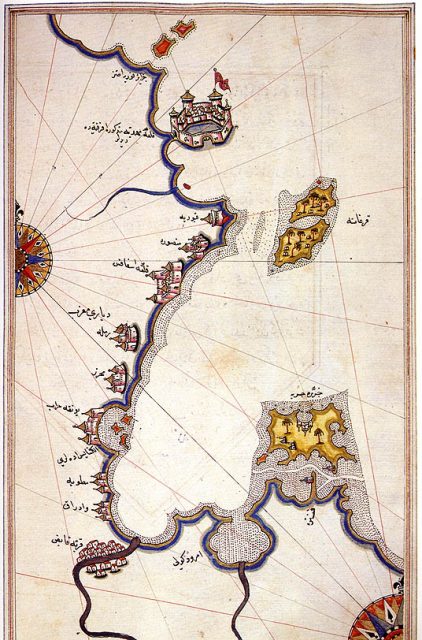
The Armies
The Knights had a trick up their sleeve, however, as they had a network of spies in Istanbul (Constantinople). In 1565 the spies informed Hospitaller Grand Master Jean Parisot de La Valette that an invasion was coming. The Grand Master quickly went about preparing his defenses, finishing construction of several forts, and rallying troops in Europe.
By the time the Ottomans arrived, the 500 Knights on the island were joined by 900 Spaniards, 800 Italians, a smaller number of Greeks and Italians, 100 of the Knights’ servants, and 500 slaves. In total, the Christians had 6,100 trained fighters, and about 9,000 counting local recruits.
On the other side stood about 9,000 cavalry, 10,000 adventurers and volunteers, 4,000 servants, many other volunteers from unknown locations, and finally, 6,000 elite Janissary soldiers. Overall, the Ottomans probably brought around 40,000 men, although accounts vary.
The Great Siege
Since Grand Master Valette knew the invasion was coming, he took steps to deprive the Ottomans of food and water. He had his men harvest all crops, ripe or not, and poison all of the wells outside of the forts.
On the Ottoman side things were less organized from the start. The Ottoman infantry and naval commanders could not even agree on where to disembark, and this would portend the rest of the siege. Eventually, they decided to begin their assault near Fort Saint Elmo, one of three critical forts defending the island. This proved to be a fatal mistake.
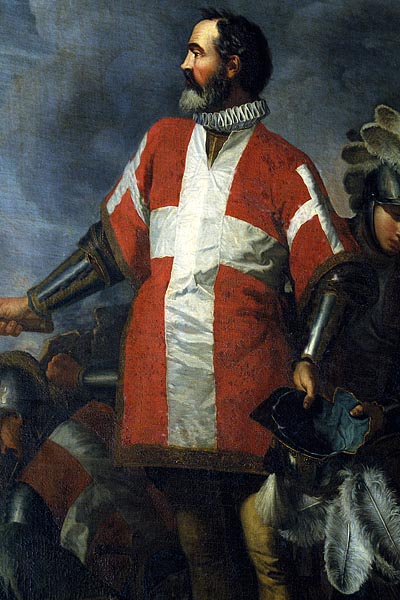
The early battle for St. Elmo was marked mostly by artillery. The Ottomans bombarded from both sea and land. However, Valette correctly deduced that the Ottomans would attack St. Elmo, and concentrated his artillery there.
The battle for the fort was pitched and desperate. Ottoman artillery pounded the fort into rubble, while the Knights evacuated their wounded and reinforced the fort at night. After a week of direct assaults, the Ottoman Janissaries were able to take part of the fort, but the defenders fought on for almost three weeks after that.
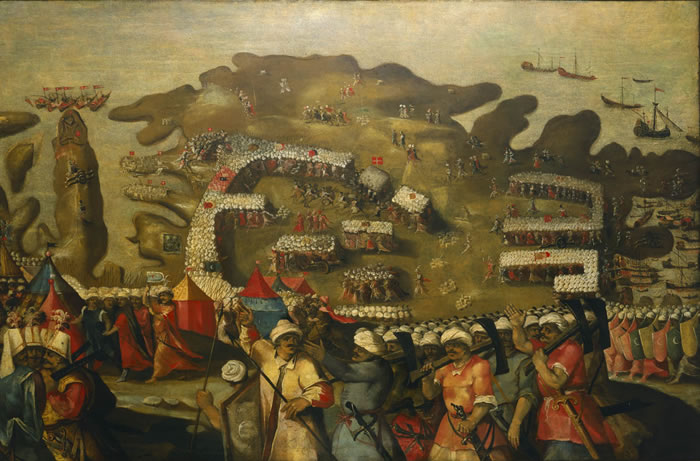
Dragut, the supreme commander of the Ottoman forces in the battle, became frustrated, and insisted that the cannons lower their aim. The cannons hit their own fortification, knocking off a section that hit Dragut, killing him. (Some sources state that he was actually hit by the defenders).
Eventually, the Ottomans stormed the fort, killing almost all of the defenders. The Ottomans had lost half of their Jannisaries. Mustafa, now in charge of most of the Ottoman force, had the Knights’ bodies decapitated and floated across the river. De Valette responded by decapitating all of his prisoners and firing their heads into the Turkish camp with his cannons.
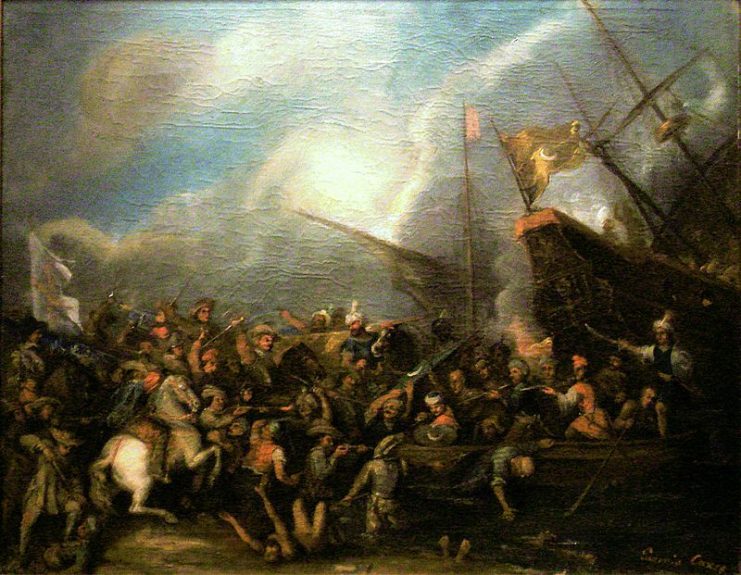
De Valette soon learned from a defector that the Ottomans were planning a massive assault on the Senglea peninsula. The peninsula was defended by Fort Saint Michael. The attack was to come from the sea on one side, and land on the other.
The Christians set up a cannon battery just above the waterline to stop the naval attack. The Ottomans did not notice the battery until it was too late, and were decimated at point blank range. The land attack ground to a halt when reinforcements were moved to the peninsula. The Ottomans took over 1,000 casualties in this attack alone, with minimal losses for the Knights.
Fortunes seemed to change when the Ottomans attacked the city of Birgu. The city had been severely bombarded, and Muslim forces breached the walls.
The defenders seemed lost when the Ottomans suddenly retreated. A Christian cavalry commander had launched an attack in the Ottomans’ rear, and their commanders mistakenly thought they were the vanguard of an entire relief army from Italy. In reality, the relief army was a month away.
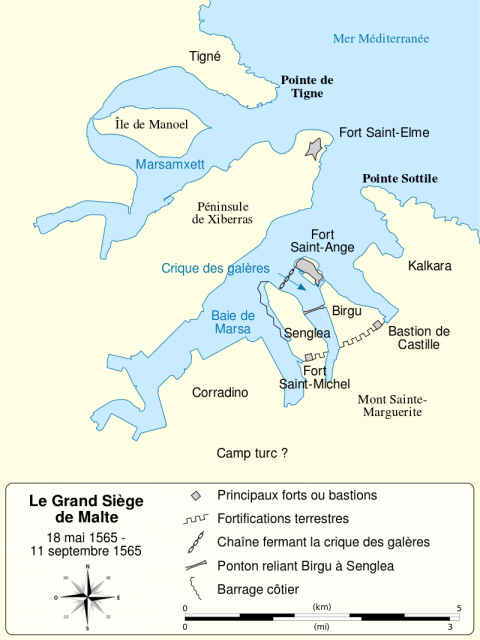
Accounts become contradictory at this point, but it is known that the Ottomans attempted another attack on the town shortly thereafter, which also failed.
Despite holding the town, the Knights’ leadership felt that the town would soon fall, and voted to retreat to Fort Saint Michael. De Valette, ever the bold strategist, vetoed this idea. At this point the Ottomans were demoralized, and he did not want to give them a victory.
The Ottomans finally decided to launch an assault on Fort Saint Michael and the city of Mdina. The assault on the fort failed as defenders used chain shot to destroy the Ottoman siege tower and other siege weapons.
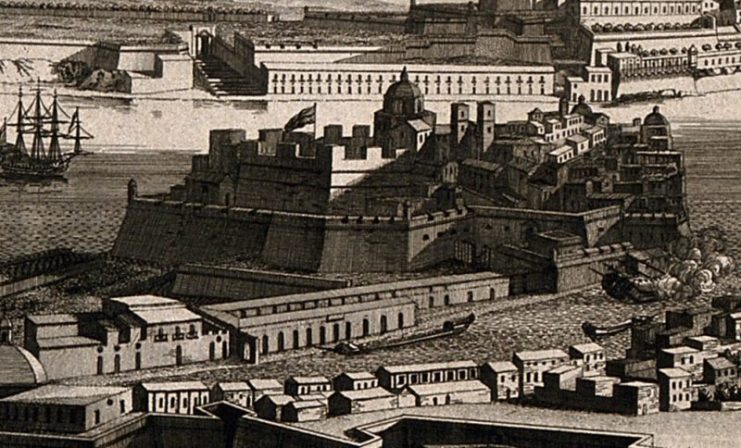
The attack on Mdina was the Ottomans’ last, and best, hope. The city was hardly defended, and the defenders panicked at the sight of the advancing invaders. The defenders did not fully understand their weapons, and began firing cannons even when the Ottomans were out of effective range.
This turned out to be an accidental stroke of genius, as the Ottomans interpreted this as a sign that the defenders had so much ammunition that they did not need to worry about accuracy. The Ottomans retreated.
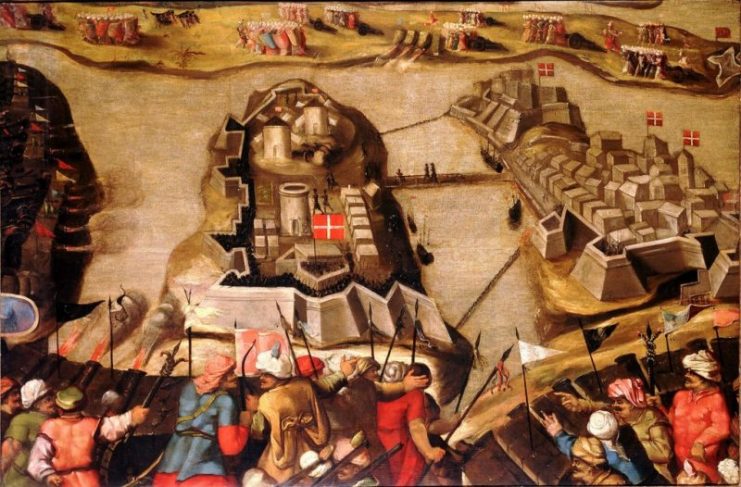
On the night of September 7, a Christian relief force of 8,000 men arrived, under the command of Don Garcia. In response to their losses and the sight of a new Christian army, the Ottomans began to retreat.
However, they burned everything they could as they retreated, enraging some of Don Garcia’s men. Those men charged without orders, and the Christian commander decided that the best option was to order a full charge. This was another accidental stroke of genius, as the retreating Ottomans were unprepared for an assault and were routed.
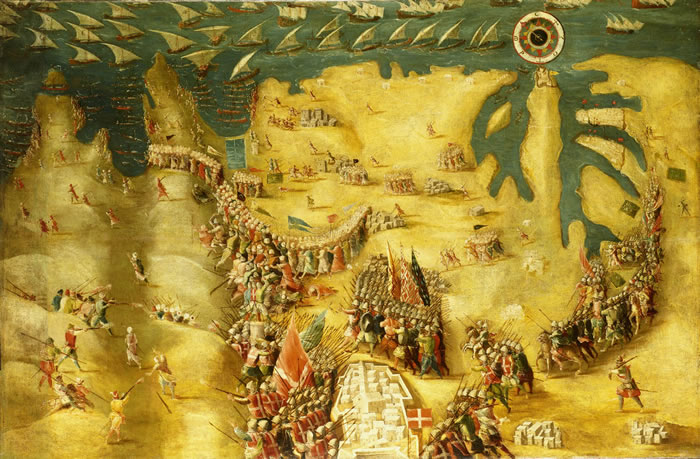
Aftermath
By the time the beaten and demoralized Ottomans boarded their ships, they had lost at least a third of their men. Some Christian sources suggest casualties closer to two-thirds, but this is likely exaggerated. The Christians had lost just over a quarter of their men, although around a third of the island’s civilian population was also killed.
Regardless of the exact numbers, the myth of Ottoman invincibility was shattered. A mere 9,000 men, some of them untrained in combat, had held off an army of over 30,000 men. The Knights survived numerous assaults, and a bombardment by as many as 130,000 cannonballs.
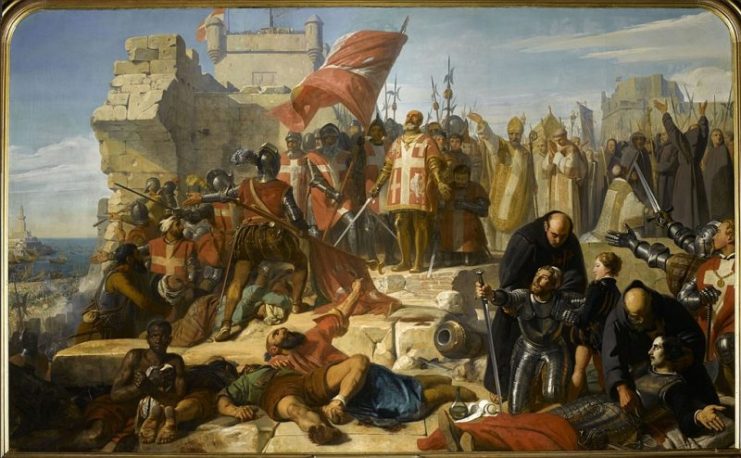
Today, historians debate the significance of the battle. Although it blunted Ottoman attacks on Europe, some believe that those attacks would have failed anyway. The Ottomans were likely overextended and could not have held any European territory they took.
Read another story from us: The Island Everyone Wanted – Malta Was the Most Bombed Place on Earth
However, contemporaries believed the battle was crucial. Elizabeth I stated “If the Turks should prevail against the Isle of Malta, it is uncertain what further peril might follow to the rest of Christendom.”
The rulers of numerous Christian realms and military orders soon put aside their differences, partially inspired by the Siege of Malta, and formed the Holy League. The Holy League went on to win a decisive victory against the Ottomans at the Battle of Lepanto six years later. And the Knights Hospitaller, later the Knights of Malta, still have their headquarters on the island to this day.
